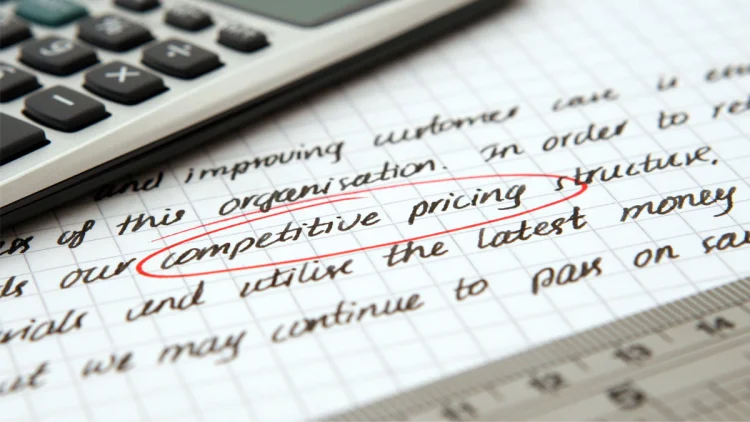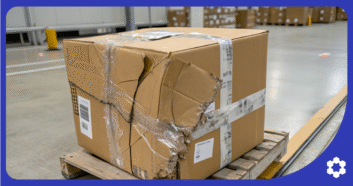Establishing an effective pricing strategy is vital for FBA sellers who want to succeed on Amazon. Sellers who nail their pricing strategy can maximize ROI while still appealing to customers and staying ahead of the competition.
In this guide, we will explore the most popular ecommerce pricing strategies, list the biggest seller mistakes, and illustrate how to future-proof your pricing strategy to help you win on Amazon.
As a seller, your ultimate goal is to maximize your profits and long-term growth on Amazon. To do this, you need to find the perfect pricing strategy that generates more sales, improves customer perception, and closely matches the value of your products.
According to edesk, product price is a major factor for 82% of Amazon shoppers, so it’s important to get it right. If your prices are too high, you risk losing sales. If your prices are too low, you struggle to make a profit. With competition growing and costs rising, it’s more important than ever to find the sweet spot.
The 6 Most Popular Ecommerce Pricing Strategies & Why They Work
There are dozens of pricing strategies that Amazon sellers can use to remain competitive, so we’ll just mention the ones we believe are worth testing. To find the right price, you must put a few of these strategies to the test.
- Value Pricing – With this pricing strategy, you look at your competitors and determine the lowest price that is fair for the value you bring and matches your customers’ perceptions. A lower price can also help your chances of winning the all-important buy box.
- Premium Pricing – This strategy consists of increasing your price over time and using branding to justify the higher cost. It can boost your profit margins, perceived value, and total sales.
- Competitive Pricing – This strategy involves analyzing your competitor’s price and using the data to construct the most attractive option on the market.
- Price Skimming – To implement this strategy, you would start with a higher price and gradually lower it as competitors catch up.
- Penetration Pricing – This strategy requires setting an initial low price to enter a competitive market and gradually raising it over time.
- Economy Pricing – This strategy calls for setting a lower price to appeal to impulse buyers. It works best if you have a high-ranking listing with little to no ad costs.
Now, let’s further explore each of these product pricing strategies so you can decide which makes the most sense for your Amazon business.
What Is Value Pricing & Why Does It Work?
Value pricing is a strategy that involves looking at the value your product brings and choosing a price that matches the perception of your customers. It’s important to remember that while a lower price can help your chances of winning the buy box on Amazon, you still need to be profitable.
By focusing on value instead of trying to undercut every competitor, you can create a strong perceived value for your product and increase the chances of making sales while remaining profitable.
Is Premium Pricing a Legitimate Strategy for Sellers?
The premium pricing strategy involves setting higher prices for your products – often justified by strong branding or unique features. This strategy can be effective for sellers looking to increase profit margins and create a higher perceived value for their products.
However, sellers need to be aware of market conditions and competitor prices to ensure that the higher price is still attractive to customers.
What Is the Secret to Competitive Pricing?

In the competitive pricing strategy, you would focus on undercutting your competition’s price to be the most attractive option on the market. This strategy works best for sellers who can offer a similar or higher-quality product at a lower price than their competition.
To implement this pricing plan of action, sellers need to continuously monitor the prices of their competitors and adjust their prices accordingly. While this strategy can help sellers win more sales, be mindful of the impact it can have on your profit margins and your product’s perceived value.
Does Price Skimming Actually Work?
The price skimming strategy consists of starting with a higher price for a new product and gradually lowering it as competitors enter the market.
This strategy allows sellers to maximize profits at the beginning of a product’s lifecycle by capturing demand from early adopters willing to pay a premium. As competition increases and the product becomes more widely available, sellers can lower their prices to remain competitive and continue to attract price-sensitive customers.
Make sure to carefully monitor market conditions and competitor changes to ensure that the price skimming strategy is effective for you.
What Is Penetration Pricing and Is It Effective?
The penetration pricing strategy calls for setting an initial low price to enter a competitive market. This strategy attracts budget-minded shoppers and helps sellers gain market share, and it can be effective in a crowded market where customers are looking for the best deal.
However, sellers using this strategy should be careful to balance the low initial price with the long-term profitability of their products. Once a strong customer base has been established, sellers can slowly raise prices to increase their profits.
The Pros & Cons of an Economy Pricing Strategy
In the economy pricing strategy, you want to set a lower price to appeal to a large number of buyers. It works best if you have a high-ranking listing with organic visibility because you won’t have money for ad costs. This strategy can be effective for sellers looking to increase their sales volume and capture a larger market share, but it may result in lower profit margins.
Carefully consider the cost of goods and other expenses when using this pricing strategy to ensure that you are still making a profit.
How Do You Figure Out the Best Pricing Strategy for Your Business?
To determine the best pricing strategy for your business, test one pricing strategy at a time to see what works. Make sure to consider factors such as market conditions, competition, and seasonality when determining whether or not it’s an effective strategy.
It’s okay to choose two different pricing strategies if they work for you, and use each one at different times of the year. For example, during the holiday shopping season, you may implement the premium pricing strategy but then adopt the value pricing strategy in the slower months to stay more competitive — and to keep those sales coming in.
The 3 Biggest Pricing Strategy Mistakes Amazon Sellers Make

There are a few common mistakes that brands make when it comes to pricing strategy, but sellers can avoid them. Let this list serve as your Amazon pricing strategy arsenal to refer back to when in doubt!
Don’t Price Too Low
While it may be tempting to price your products as low as possible to win the buy box, this can hurt your profits, devalue your brand, and damage the perceived value of your products.
Also, constantly lowering your prices to be the cheapest option can lead to a price war with your competitors. This can be detrimental to your business in the long run.
Instead, aim to price above your lowest-priced competitor to avoid being the cheapest option.
Beware of Rule-Based Repricers
If you use a non-algorithmic repricer tool, you may be using rigid rules that don’t consider changes in market conditions or competition. This can result in pricing that is not competitive and may lead to fewer sales and lower profits.
If you use an automated repricing tool, use an algorithmic repricer that adjusts in real time and considers adjustments in market conditions and competition.
“Although the repricer itself is not a silver bullet, it is definitely the most advanced technology that I recommend to consider, along with the competitive customer service, and the cheapest possible source of product,” said Tarik Ozkan.
After all, machines are rational, and a good repricing tool will save you plenty of time.
Don’t Be Too Hands-off
Failing to check on your automated repricer tool and what your competition is up to can negatively impact your business. Make sure to keep an especially close eye on it when you first start using the tool. This ensures you’re happy with how it works and the rules you’ve set.
Additionally, if you’re not paying close attention to your competition and the marketplace as a whole, you could miss opportunities to adjust your pricing and capture more sales. For example, if a competitor runs out of stock or adjusts their pricing, you may be able to capture more sales by adjusting your pricing to match.
How to Future-Proof Your Pricing Strategy as an FBA Seller

To stay ahead of the competition and maximize your profits on Amazon, you must evaluate and adjust your pricing strategy regularly. Here are some tips to help you future-proof your pricing strategy for long-term growth.
Track Competitors and Revisit Your Pricing Strategy Regularly
Keep an eye on your competitors’ pricing strategy, so that you can adjust your strategy for the results you want. After all, they’re your best-selling competition for a reason: they have something figured out. Consider revisiting your pricing strategy at least once a year and any time you notice significant shifts in the market.
Monitor Seasons and Trends and Adapt Your Strategy Accordingly
Seasons and trends can impact your pricing strategy. For example, you may need to adjust your prices during peak shopping season or in response to your viral product or a competitor product that’s out of stock.
By monitoring these factors and adapting your strategy to work within the current circumstances and demands, you can stay ahead of the competition and take advantage of new opportunities.
Try an Automated Tool Like Amazon’s Automate Pricing feature
Automated tools like this one can help you quickly and easily adjust your prices in real time based on market conditions and your competition, helping you maximize profits. It’s also worth noting that top Amazon sellers don’t just master the way they track their competition — they also revisit their pricing strategy every six months or so.
Understanding successful pricing strategy objectives and staying up-to-date with market trends helps third-party sellers to future-proof their pricing strategy and ultimately win more sales on Amazon.
Whether you want to optimize your listing strategies or create crucial alerts to keep you informed of any issues, Carbon6 can help with all of your pricing questions and needs. Our tool suite has every solution an FBA seller needs to simplify success, on and off Amazon.




